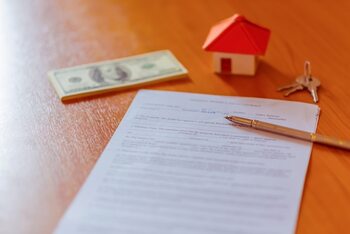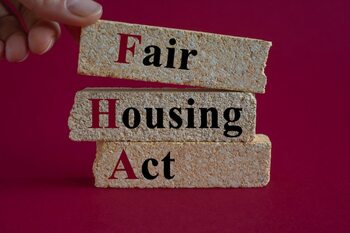How to document the condition of the property at the end of the lease

Are you about to finalize a rental contract and want to ensure that your property is in optimal condition? Documenting the state of the property is vital to protect your investment and avoid conflicts with the landlord. In this guide, we will show you how to conduct an effective inventory, take detailed photographs, and write a clear report that supports any claims. Get ready to put the stress of the moving process behind you and ensure that you get your deposit back without any issues.
1. The importance of documenting the condition of the property
Documenting the condition of the property at the end of a rental is an essential practice that can prevent misunderstandings and disputes with the landlord. By conducting a detailed inventory, not only is a clear record of the property's condition established, but it also protects the tenant from potential unjust claims regarding damages or wear. This process provides an objective reference point, making it easier to compare the initial and final condition of the apartment or house. Without this documentation, tenants may find themselves at a disadvantage if the landlord decides to withhold part of the deposit for unjustified reasons.
Additionally, the importance of including detailed photographs in this process cannot be underestimated. Images are a powerful tool for visually documenting any pre-existing damage or the good condition of the facilities and furniture. Make sure to capture each room from different angles and focus on key details such as stains on walls, defects in floors, or conditions of appliances. By drafting a clear report that includes both written observations and photographs, you create a comprehensive document that supports your rights as a tenant and reinforces your position against any future claims.
2. Preparation: What do you need before starting?
Before starting the documentation process of your property’s condition, it is essential to gather some materials and tools that will facilitate your work. First, make sure to have a notebook or a digital spreadsheet handy where you can record all important details. You will also need a camera or a smartphone with good resolution to capture clear and representative images of each area of the property. Don’t forget to include a pen or pencil, as well as sticky labels if you need to mark certain areas or objects in the photographs. In addition, it is advisable to have a checklist that will guide you in the inspection of the property. This list may include items such as walls, floors, windows, doors, and appliances. By having this visual guide on hand, you can ensure that you do not overlook any important details during the review. Finally, if possible, try to carry out this documentation with another person; this will not only make the process more efficient but also allow for different perspectives on the condition of the place.
With these preparations in place, you will be better equipped to conduct a thorough and meticulous evaluation of the property before finalizing your lease agreement. Remember that every small detail matters when it comes to protecting your investment and ensuring the full return of your deposit.
3. How to conduct a thorough inventory
Conducting a thorough inventory is a crucial step in documenting the condition of the property at the end of a lease. Start by walking through each room and carefully noting all the features and conditions of the spaces, from the walls to the appliances. It is advisable to use a checklist that includes items such as the condition of the floors, windows, doors, and any furniture that belongs to the property. By being meticulous at this stage, you will not only ensure that you have a clear record but also establish a solid foundation for any future claims related to damage or wear and tear.
In addition to the written list, complement your inventory with detailed photographs of each area of the property. Be sure to capture both general and specific images, focusing on areas where disagreements may arise, such as stains on carpets, marks on walls, or the condition of appliances. These images will serve as visual evidence to support your claims about the property's condition at the time of handover. Remember to take photos from different angles and ensure they are dated to avoid any misunderstandings regarding when they were taken.
Finally, organize all this information into a clear and concise report that you can present to the property owner or manager. This report should include your written inventory along with the relevant photographs and any additional comments on necessary repairs or problematic areas. A well-structured format not only demonstrates professionalism but also facilitates communication between both parties. Be sure to keep copies of both the inventory and the final report, as these documents will be essential if disputes arise regarding the condition of the property after your departure.
4. Techniques for Taking Effective Photographs
To effectively document the condition of the property, it is crucial to master some photographic techniques that will help you capture every corner and detail. First, make sure to have good lighting when taking the photos. Natural light is your best ally, so try to schedule the session during the day when the windows are open and light flows freely. If the lighting is insufficient, consider using additional lights or a tripod to avoid blurry images. Also, make sure to clean and clear the spaces before photographing them; this helps make the images clearer and more representative of the property's actual condition.
Another important technique is to use different angles and perspectives when taking photographs. Instead of capturing a single image per room, take the time to make several shots from various strategic points. This will not only allow you to obtain a better representation of the space but also facilitate any future discussions about the condition of the property. Remember to include specific details such as cracks in walls, stains on carpets, or damage to appliances; these images will serve as visual evidence in case of disagreements with the landlord regarding potential deductions from your deposit. Finally, organize your photographs by room and create a digital file that you can easily present when necessary.
5. Writing the report: Keys to make it clear and concise
The drafting of the property condition report is a crucial stage in the rental contract termination process. To achieve a clear and concise document, start by structuring it logically. Use headings and bullet points that enhance readability, allowing both the landlord and you to quickly locate relevant information. It is important to be objective and avoid ambiguities; describe each room separately, mentioning any specific damage or wear accurately. Remember to include details such as dates and references to the photographs taken to support your observations.
Additionally, use simple and direct language so that the report is accessible and understandable. Avoid unnecessary technical terms that may hinder the interpretation of the content. At the end of the document, it is advisable to carry out a thorough review to correct grammatical or formatting errors that may detract from the professionalism of the report. Finally, keep a signed copy of the document by both parties; this will not only provide you with peace of mind but will also serve as proof in case of future disputes related to the return of the deposit.
6. What to do if you find damage or hidden problems
If during your final inspection of the property you find damages or hidden problems, it is important to act quickly and effectively. First, document everything you consider problematic, taking photographs and noting specific details about the nature and extent of each damage. This will not only serve as evidence for any future claims, but it will also facilitate communication with the owner or rental agency. Be sure to include images that show both the problems in their entirety and close-ups that highlight the specific damages.
Once you have gathered all the necessary documentation, it is essential to notify the property owner or manager immediately. Write a clear and concise report describing each issue found, attaching photographs as visual support. If the damages are significant or if there are hidden structural problems that could affect your deposit, consider seeking legal advice to better understand your rights and responsibilities. Acting proactively will help you ensure a fair resolution and minimize the risk of future conflicts with the landlord.
7. Final steps: Delivery of the report to the owner
Once you have completed the documentation process of the property's condition, it is crucial to deliver a detailed report to the owner. This document should include a clear and concise summary of the conditions in which the property is at the time of delivery. Be sure to attach all photographs and any other relevant material that supports your observations. A well-structured report will not only facilitate communication with the owner but will also serve as evidence in case of disputes regarding the deposit or any damages claimed later.
It is also advisable to schedule a meeting with the owner to discuss the report in person. This not only demonstrates your willingness to collaborate but also allows for clarification of any doubts or discrepancies that may arise. During this meeting, be sure to maintain a professional attitude and be open to dialogue; this can be key to achieving a favorable resolution. Finally, keep copies of the report signed by both parties as proof of the agreement reached, which will provide you with greater peace of mind when concluding your contractual relationship with the property.



